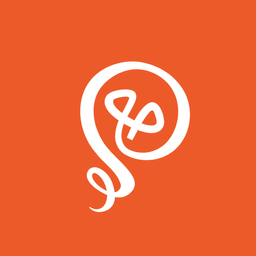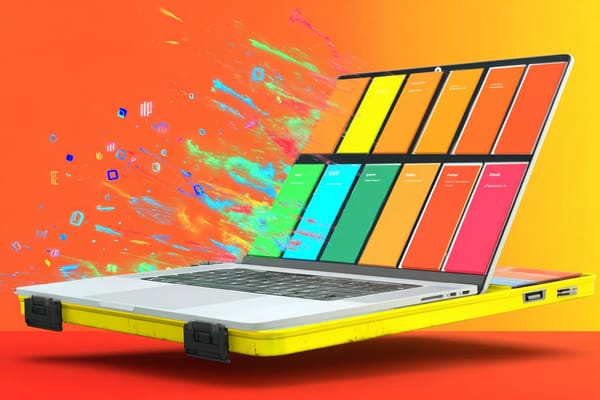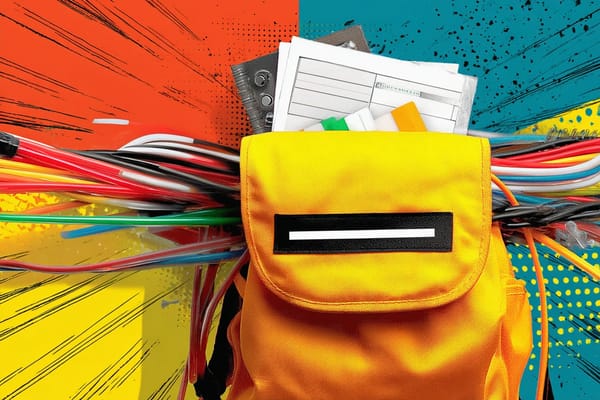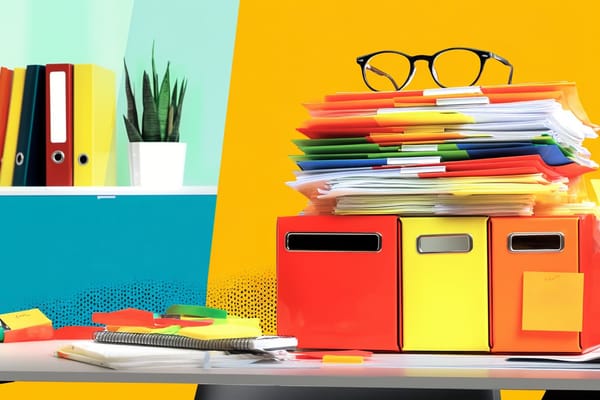Why I Use Both Trello and Todoist
Yes, I need two productivity tools. But I use them very differently.
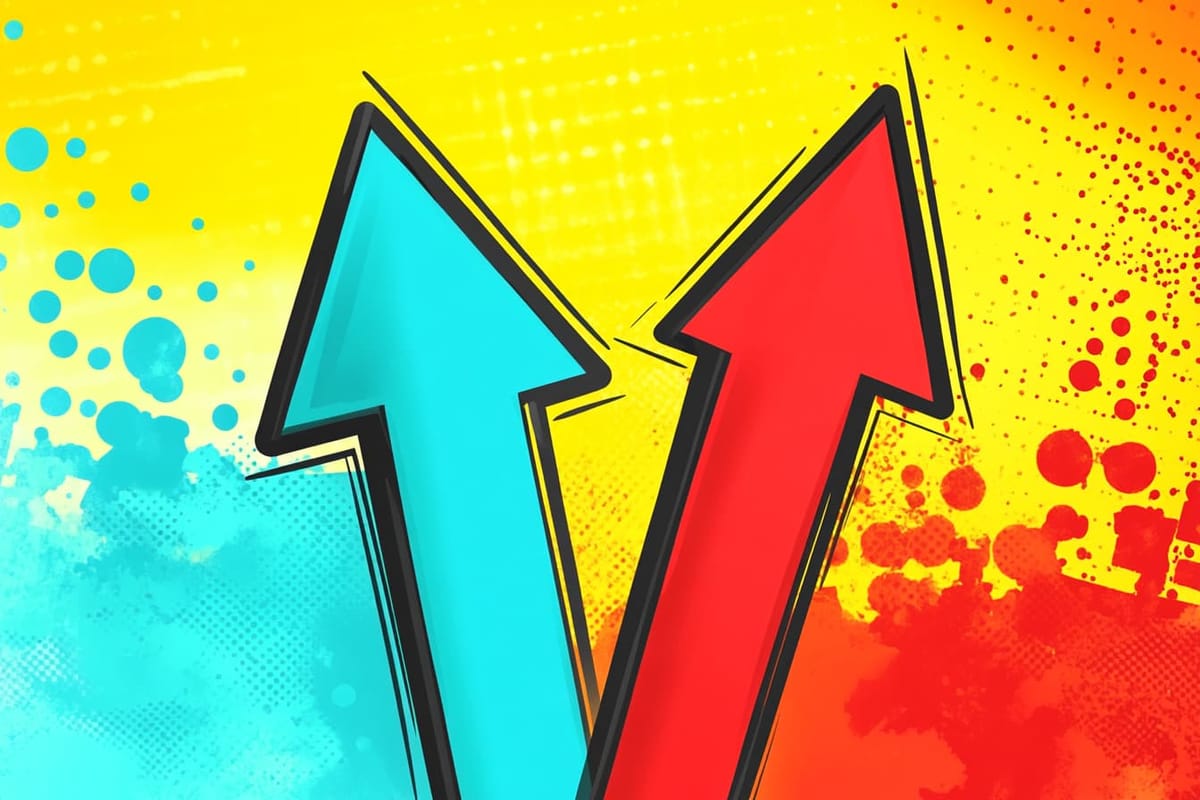
A few days ago, Todoist sent me an email informing me that I started using the app nine years ago. I was shocked — in the app world, that seems like an incredibly long time to stick with one product.
Admittedly, I haven't been a consistent user. There were a few years where I likely did not log in at all. Yet, I always found that I came back to Todoist when I felt like I didn't have a good handle on my to-do list, and now I've been a very consistent daily user for almost a year.
What changed? A few things actually. For a very long time, I was working a job where I still used Outlook, even though emails were running through GSuite. I used the Outlook Tasks feature to keep track of everything because it was so easy to create tasks from emails.
Then I left that job in early 2021. My new job relied on Slack for a lot of communication — including client communication. In addition to a role as a content marketing manager with many due dates to keep track of, I also took on some freelance writing.
Yet while Todoist is amazing, it's not my only tool to keep track of my life. I also use Trello. I've always been of the mindset that I'll use more than one tool to get something done, as long as I don't feel like I'm duplicating my effort. And I have distinct reasons for using both Todoist and Trello.

Trello is for planning out projects.
I write in a lot of places: on Medium, Substack, LinkedIn, my blog, plus my various social profiles like Twitter and Instagram. Plus I occasionally pitch publications to contribute a guest post. Because I try to be consistent with writing, I plan out my content in Trello.
I have lists for each of my different platforms and then within the lists, I create cards for writing ideas. Within those cards, I may include links to sources, a quote, or some quick notes to myself.
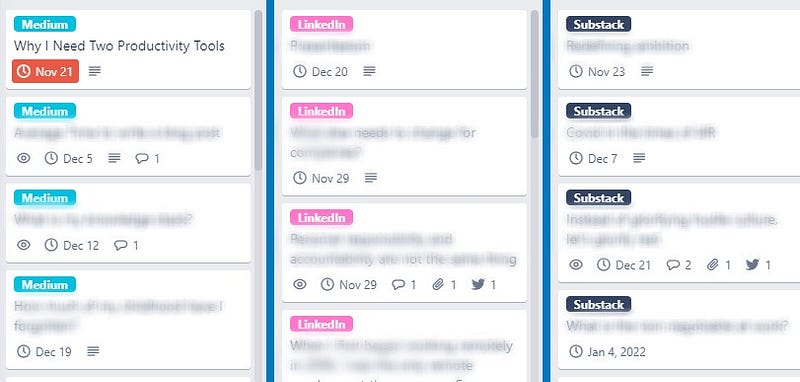
I can then look at my plan in the Calendar Power-Up in Trello. With this "big picture" view, I'll drag cards around to reschedule them if I think something needs to change.
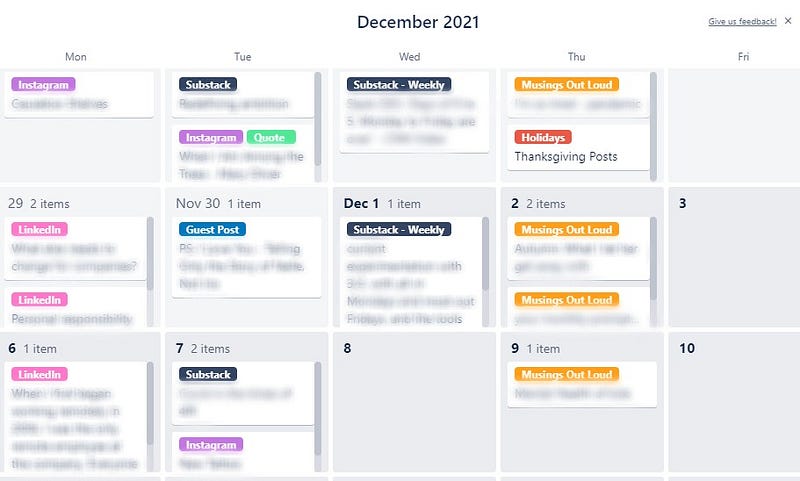
Todoist is for keeping track of the details.
While I like Trello for my overall planning, I also need something to track actual "to do" items: the day-to-day tasks in my life. I have to keep track of submitting outlines for approval and invoicing clients with my freelance work. I have recurring tasks related to running our household, like paying bills or even my annual reminder to schedule a checkup with my doctor.
I use Todoist to answer the "What do I need to get done today?" question — whether it's for work life or home life. Todoist has a Gmail extension so, much like my use of Outlook in the past, I can flag an email for follow-up at a later date.
Todoist also has Subtasks and while Trello has some similar functionality, I like Todoist better. Todoist also has hands-down the best ability to interpret "human formatted" dates as due dates, especially for recurring items. Fourth Wednesday or every other Friday or whatever… I can just type it in, and Todoist will figure it out.

And one of Todoist's best features is the ability to connect to my Alexa devices. I can say something like, "Alexa, add 'send an email to Mom about visiting' to my to-do list," and it will show up in Todoist. (Hint: I usually add the word "tomorrow" to the end of any command so that it shows up in Todoist due the next day. That way, I'll see it the next time I log into the app and can change it to the actual due date. That was easier than trying to get the voice commands for the dates right.)
Sometimes I use Zapier to integrate the two.
Much as I try to keep them separate, sometimes there is overlap between Trello and Todoist. I write columns for a magazine and keep a running list in Trello of ideas — but they don't have a specific due date yet.
At the point where I start working on the article is when I need to keep track of when it is due and several other steps along the way (like some research or reaching out to sources). I move the card to a Trello list called "In Progress." When that happens, Zapier [affiliate link] works its magic in the background and creates some Todoist tasks for me. I don't come back to the Trello card until I've delivered the article and am ready to invoice for it.
I also keep a paper calendar.
Even between both Trello and Todoist, I still have a paper calendar. I know…
The paper calendar is only a monthly view. I'll add some freelance work that is due every month (though not always the same day), and then as new projects come in, I add them.
This calendar is my gut-check. Because I work full time, have my personal writing projects (tracked in Trello), and my freelance work, the calendar shows me if I am getting overloaded. I know which days I have the bandwidth to work, especially when juggling family commitments. If those "slots" get filled up on my paper calendar, I can't take on anything else.
I recently had parent-teacher conferences for my 12-year-old son, and his teachers said that sometimes he misses turning in assignments. He has an assignment notebook but doesn't use it well. As we drove home, I told him that developing a good system for what he needs to do is a life skill: no one's brain can keep track of everything.
Obviously, everyone's system will be different. What I've found over the years is that I really need a zoomed-in view and a zoomed-out view. Maybe there is an app that does everything. But for now, I'm really happy with my Todoist-Trello-Paper Calendar combo.
Check out my eBook — a guide for creators looking to better manage their time and content across multiple platforms.


